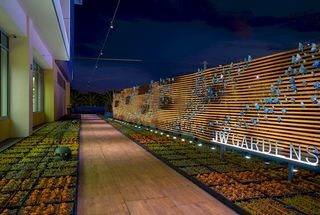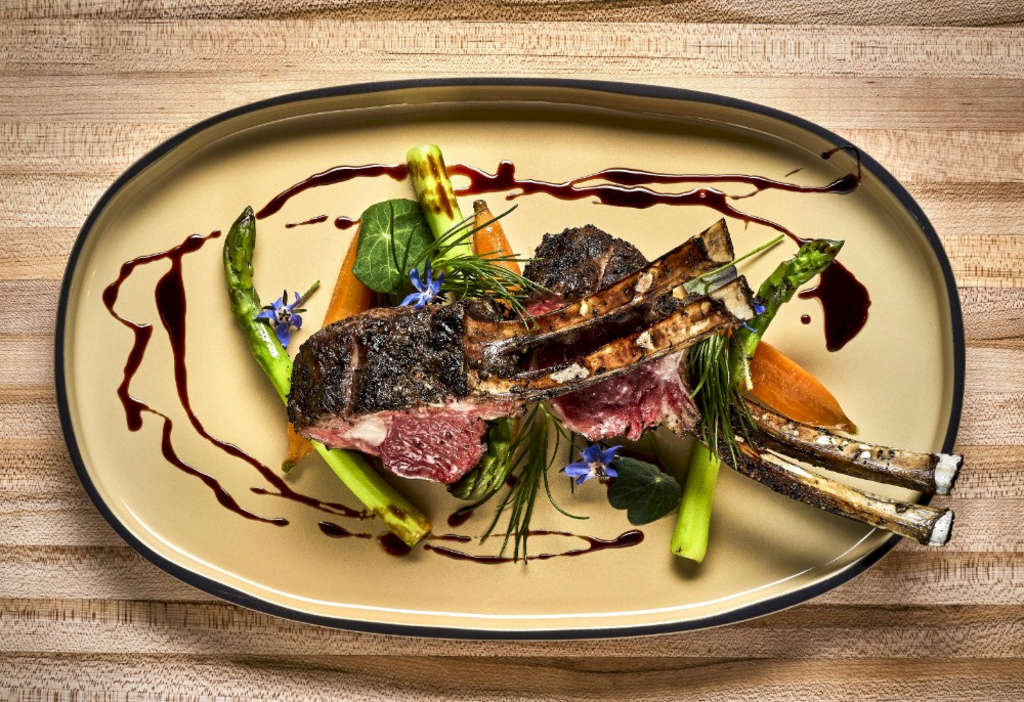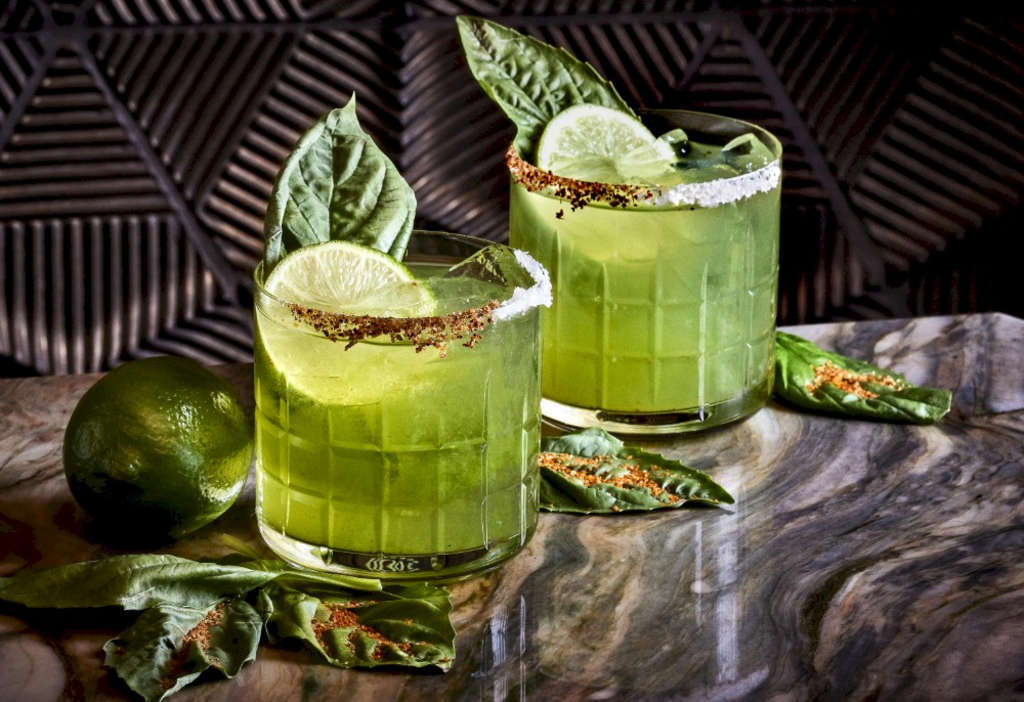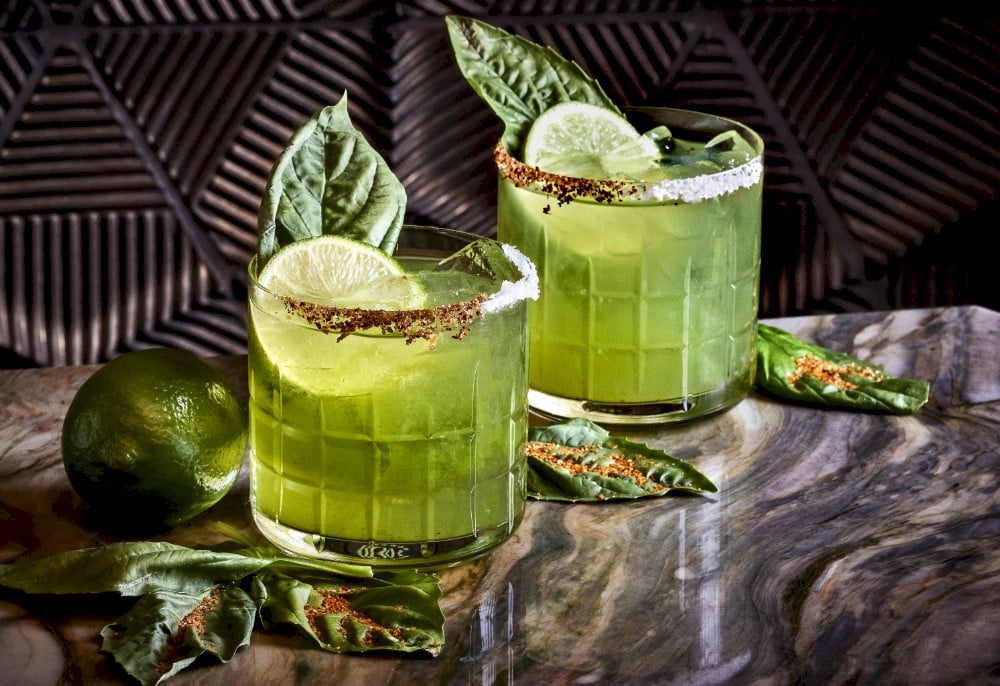What is Seed-To-Table Dining and How is it Shaping The Food and Beverage Industry?

To be successful in the food and beverage industry, it is important for hotels and catering programs to pay close attention to consumers and what trends guests are craving.
Many consumers follow strict dietary restrictions, including vegetarian, vegan, dairy and gluten free, making it a challenge for food and beverage creators to create culinary dishes and beverages that can suit every diet.
Throughout the pandemic, consumers have also become more aware of where the ingredients are sourced. As a result, providing transparency on where ingredients come from and how they are sourced has become a vital factor for determining food and beverage offerings to meet the growing demand for the new concept, seed-to-table dining.
So what is the seed-to-table restaurant concept? It's the use of ingredients used in cocktails, dishes, and garnishes that are grown from an onsite garden, according to Foodable Network. The seed-to-table concept works best for chefs who create seasonal offerings by planting ingredients based on what crops grow best that season, and are located in a region where the use of fresh ingredients are in high demand. By utilizing seed-to-table initiatives, food and beverage programs also become less reliant on other vendors that may contribute to the carbon footprint and will not be impacted by production shortages. As food and beverage teams become creative in their dishes, consumers are taking a close look at where the ingredients are sourced from and how they are prepared.
Why is Seed-to-Table Dining Important?
One of the main reasons the seed-to-table dining concept is growing in popularity is because it is a highly sustainable practice. Roughly 25 percent of global carbon emissions are caused by the worldwide industrial production of food, according to the US Environmental Protection Agency (EPA). This is largely because much of the foods we typically buy travels an average of 1500 miles in the U.S., as reported in a study done by the University of Vermont Extension. By practicing seed-to-table initiatives, produce travels little to no distance, cutting out all the carbon emissions that would be caused by transportation.
It is also important for restaurants and catering programs to commit to a sustainability program due to the fact that many customers have even begun seeking out dining options based on the sustainability initiatives they practice. 43 percent of diners say they would pay more for food that was sustainable and 68 percent believe restaurants should have a process in place to avoid food waste altogether, according to a survey of 7,000 global consumers by Deliverect. Knowing that there is an increased appetite for sustainable dining options, implementing seed-to-table practices is a great start to become more sustainable and appeal new and existing customers for businesses in the food and beverage industry.
In addition to the sustainability benefits of a seed-to-table program, it is also a reliant way for food and beverage programs to ensure they are not affected by production and staffing shortages across the food labor industry. With ingredients readily available in a nearby garden, food and beverage teams do not have to worry about limited ingredients to create their culinary specialties due to supply chain issues or labor shortages. Since fresh produce has a short shelf life, the supply chain time line for fresh produce to arrive at grocery stores and restaurants is tight, adding another layer of difficulty to receive fresh ingredients to use for their dishes.
Throughout the pandemic, people were buying groceries in bulk to prepare for stay at home orders and limit the amount of times they left their homes, adding to supply chain issues. Farmers were also unable to go to work to grow and pick fresh produce due to being sick with the virus, which led to supply chain shortages throughout the food and restaurant industry, according to National Geographic. Adding seed-to-table initiatives to the food and beverage program ensures chefs have fresh and plentiful produce nearby without worrying about the supply chain.
Perhaps one of the most important aspects of seed-to-table dining is that it allows food and beverage teams to utilize fresh ingredients without harsh preservatives and incorporate produce that is never frozen. Most ingredients that are sourced outside of seed-to-table initiatives use preservatives and freezing techniques to increase the shelf life of produce. Pesticide sales for commercial food production make over $15 billion annually while an additional $19 billion is spent on fertilizer, incorporating a large amount of synthetic chemicals used for growing produce, according to the EPA. If a hotel's food and beverage program manages the growth and harvesting of their own ingredients, guests feel an elevation of comfort and safety that the dishes they are consuming are not grown in mass amounts with pesticides and weed killing chemicals. Harvesting their own crops also allows them to control other factors that can contaminate food, including water, soil, animal feces, and human contamination.
The seed-to-table dining experience is also a great learning experience for chefs and their guests. The food and beverage program at JW Marriott, Anaheim ensures employees educate guests where the ingredients are grown and explain the process of seed-to-table dining. Guests hold an appreciation for fresh ingredients, a successful sustainability practice, and the transparency of where the ingredients come from in the seed-to-table dining program. Other hotels taking initiative with the seed-to-table dining concept include The Madrona Hotel, Chebeague Island Inn, and The Inn at Newport Ranch.
Starting Your Own Seed-to-Table Program
Before a food and beverage program starts their own seed-to-table program, their Executive Chef and gardening crew should consider a few different factors including location and commitment. Elements like sun exposure, water accessibility, soil quality, and climate factors should be evaluated before planting a garden used for seed-to-table dining, according to the FDA. Following these guidelines for growing produce ensures guests are consuming fresh ingredients that are properly grown and harvested.
For hotels considering growing their own produce and starting a seed-to-table dining program, it is important to do some research on what ingredients make sense to grow due to seasonal ingredients, the climate of the destination, and what dishes to include on the menu. Some of the easiest produce to start growing in a seed-to-table garden include lettuce, tomatoes, potatoes, radishes, chard, and herbs. These ingredients can be used to create menu items such as salads, pizza toppings, side dishes, garnishes, and more. As the property becomes established in a garden that harvests for seed-to-table dining options, chefs may start incorporating unique ingredients to add to the garden including squash, agave, berries, and other vegetables. As much as guests appreciate consuming seed-to-table dining options, chefs thoroughly enjoy the process of harvesting their own ingredients to create unique dishes with the fresh element.
Seed-to-Table Dining at the JW Marriott, Anaheim Resort
The seed-to-table food and beverage program at the JW Marriott, Anaheim Resort began as an homage to the strawberry field that once grew where the resort is now located. Once the seed-to-table program was rooted, the food and beverage team continued to find inspiration with fresh ingredients and seasonal produce to create new dishes and cocktails. The rooftop garden on property grows fruits, vegetables, herbs, succulents, flowers, and fruit trees.
Year-round the JW Garden grows rosemary, lavender, basil, romaine, cilantro, chili peppers, and strawberries. Blood orange, lemon, and olive trees are also planted throughout the garden. Located in Southern California, the weather is consistent year-round to grow seasonal ingredients and herbs. During fall and winter, the garden grows ingredients such as squash to incorporate into seasonal dishes. In the spring and summer, guests enjoy seasonal berries and vegetables that are included in salads, cocktail ingredients, dinner garnishes, and more.
Every morning the food and beverage team harvests the ingredients they need to prep for the day to prepare seed-to-table dishes and cocktails. Seed-to-table menus are featured at each of their three restaurants along with room service to 466 rooms, and is also incorporated in their catering menu for meetings and events they host throughout the year.
Reprinted from the Hotel Business Review with permission from http://www.hotelexecutive.com/





